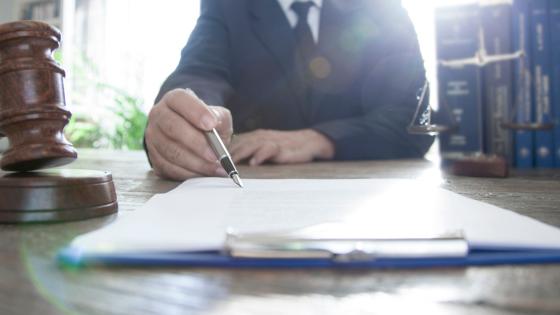Consider a restaurant that has been inspected by the local health department and received a hygiene grade of B. Should we expect this restaurant to voluntarily provide this information to restaurant-goers? The restaurant could reveal their grade, in which case restaurant-goers will know that the restaurant’s food safety practices are good, but not great. Alternatively, they could lie about their grade – but this is a significant risk given the fact that they could easily be caught. Generally, policies such as truth-in-advertising laws prevent such brazen lies in business settings. Yet the restaurant has a third option – which is to say nothing and let customers interpret the sound of silence. These three options are in no way unique to restaurant disclosure of hygiene ratings. In virtually all industries, businesses have private information about their goods and services and must decide whether to provide this information to customers.
The sound of silence
Ultimately, the way that customers interpret the sound of silence turns out to be critical to designing disclosure policies. Theories of voluntary disclosure – dating back to Viscusi (1978), Grossman and Hart (1980), Grossman (1981) and Milgrom (1981) – suggest that even when disclosure is voluntary, market forces can drive firms to completely reveal information about their quality if lying is prohibited and the costs of disclosure are low.
The logic is simple. When businesses choose not to reveal information, savvy consumers should understand that this was a strategic decision indicating that the business has something to hide. In the restaurant case, a grade of A will certainly be revealed. What about a B? Because A’s will be revealed, revelation also becomes optimal for the B’s (who want to separate themselves from C’s and worse). This game-theoretic logic implies that only the lowest quality businesses will withhold information, and that consumers will understand this – as long as the conditions above are met. From a policy perspective, this suggests that policymakers can ensure high rates of disclosure by ensuring that lying is prohibited, via certification agencies and truth-in-advertising laws, for example. Yet while voluntary disclosure is observed in many industries, it is far from complete (see Dranove and Jin 2010).
One factor driving the gap between theory and practice in this setting is the fact that much of the theoretical literature relies on a high degree of sophistication among customers. Do customers really understand the strategic nature of non-disclosure decisions and can they make good statistical assessments? A growing body of evidence within behavioural economics suggests that these may not be realistic assumptions, and that people sometimes underestimate the strategic elements of decision-making or have systematic statistical biases.
Disclosure in the lab
To understand the impact of these behavioural factors on disclosure, we ran a series of lab experiments to understand the inferences that people make in disclosure settings and the extent to which businesses might be able to exploit biases in decision-making (Jin et al. 2015). Our lab setting has two players – an information sender (e.g. the business) and an information receiver (e.g. the customer). The sender receives private information that perfectly identifies the true state (e.g. the business’s true quality level). The sender then decides whether or not to disclose this information to the receiver. The sender is not allowed to misrepresent the state, which contrasts with existing experiments on strategic information transmission (Cai and Wang 2006, Wang et al 2011). After the sender’s disclosure decision, the receiver must guess the state. If the sender has revealed the state through disclosure, then this task is trivial. If the sender has not revealed the state, then the receiver must infer it based only on the sender’s decision not to disclose. However, the receiver also knows the distribution of states and that the sender has private information.
To mimic reality, the sender and receiver do not have aligned interests – the sender has higher earnings when the receiver guesses that the state is higher (guesses and states are numeric values), and the receiver has higher earnings when his or her guess is closer to the true state. The unique sequential equilibrium of this game is that senders always reveal their information (unless the state takes the lowest possible value, in which case they are indifferent between revealing and not), and receivers correctly guess that the state takes the lowest possible value when senders do not reveal this information.
Failure of theoretical predictions
When we implement this game in the laboratories at New York University and Harvard Business School, we find widespread failures of the theoretical predictions. Senders do not fully disclose the state, and receivers are not fully sceptical about non-disclosure. One explanation is that receivers systematically underestimate the extent to which ‘no news is bad news’ and that senders take advantage of receiver mistakes and do not disclose when their quality is low. Further experiments suggest that this explanation is more likely than alternative explanations such as risk aversion, social preference, or random errors. We also conduct experiments to detect whether the failure to interpret no news as worst news is due to the receiver’s inability in anticipating the seller’s disclosure strategy or the difficulty of forming belief conditional on non-disclosure. We find evidence for both.
Our results suggest that the barrier to disclosure may be more fundamental than the external or strategic factors suggested by the existing literature. Rather, the problem lies in the key assumption of consumer sophistication – an average consumer fails to interpret no news as the worst news. This suggests that consumer education is very much needed for voluntary disclosure to work, even if sellers have perfect information and a certification agency can verify their information for free.
A more practical question is how to educate consumers. One option is simply to inform every consumer of the true product quality after consumption. While we implement this experimentally and find it to be an effective method, it is not a realistic policy intervention for most settings of interest, given the high costs of doing so. One alternative that we find effective (and consider more realistic) is to tell receivers the fraction of senders who chose to report and not report for each state. We find that this intervention leads to improved guesses on the part of receivers and higher rates of disclosure on the part of senders. Though the improved equilibrium is still not 100% voluntary disclosure, a simple summary of disclosure rates by quality score may go a long way towards overcoming incorrect consumer beliefs. The core insight is that policymakers should help customers to understand the sound of silence.
References
Cai, H and J T Y Wang (2006) “Overcommunication in strategic information transmission games”, Games and Economic Behavior, 56(1): 7-36.
Dranove, D and G Z Jin (2010) “Quality disclosure and certification: Theory and evidence”, Journal of Economic Literature, 48(4): 935-963.
Grossman, S J (1981) “The informational role of warranties and private disclosure about product quality”, Journal of Law and Economics, 24(3): 461-483.
Grossman, S J and O D Hart (1980) “Disclosure laws and takeover bids”, Journal of Finance, 35: 323-334.
Jin, G, M Luca and D Martin (2015) “Is no news (perceived as) bad news? An experimental investigation of information disclosure”, NBER Working Paper, No 21099.
Milgrom, P R (1981) “Good news and bad news: Representation theorems and applications”, Bell Journal of Economics, 12(2): 380–391.
Viscusi, W. K. (1978). A Note on “Lemons” Markets with Quality Certification. Bell Journal of Economics, 9(1): 277–79.
Wang, J T Y, M Spezio and C F Camerer (2010) “Pinocchio's pupil: Using eyetracking and pupil dilation to understand truth telling and deception in sender-receiver games”, The American Economic Review, 100(3): 984-1007.





